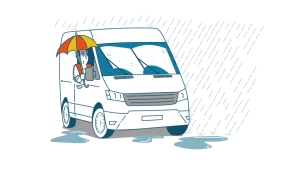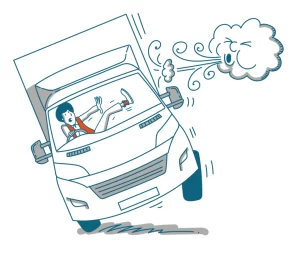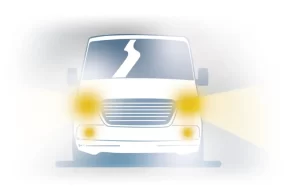Check what you know
Did you know?
Best practice tips
Check what you know
Did you know?
- Winter driving comes with extra risks. Rapidly changing weather can impact visibility and road conditions, so preparation is key.
- More than a third (34%) of drivers who have been involved in a collision or near-miss on a major road or motorway say weather played a role.
- It only takes an egg cupful of water to be sucked into an engine to ruin it.
Best practice tips
Top tips for driving in heavy rain and floods:
Driving fast through standing water is inconsiderate, can cause loss of control and can also cause serious damage to your engine.

- Don’t drive through flood water: there may be hidden hazards, and it may be deeper than it looks.
- If it’s time for your wipers, it’s time to slow down.
- Use dipped headlights, especially if visibility is seriously reduced.
- Give yourself more time to react – increase the gap between you and the vehicle in front to at least four seconds.
- Beware of spray from other vehicles reducing your visibility.
- Visibility affects others too, so anticipate their actions and be prepared.
Top tips for driving in strong winds:
 Strong winds, either on their own or accompanying heavy rain as part of a storm, can be hazardous to road users.
Strong winds, either on their own or accompanying heavy rain as part of a storm, can be hazardous to road users.
- Keep both hands on the steering wheel and an eye out for debris on the road.
- Prepare for strong winds and gusts on exposed stretches of road.
- Stay focused when crossing bridges where you’re more likely to encounter side winds. Keep room on either side of your vehicle to allow for it being blown sideways.
- Leave extra room around cyclists and motorcyclists as they may veer across the road.
- Maintain a safe distance from other vehicles, especially high-sided vehicles, and caravans.
- Plan your journey carefully, checking weather and traffic bulletins regularly.
Top tips for driving in fog:
Fog is a major travel hazard which can affect visibility. It occurs most often in late autumn and towards the end of February, but can be a problem throughout spring and autumn.

- Use dipped headlights, wipers and demisters. Avoid using full beam, as the fog reflects the light back, reducing visibility even further.
- Use fog lights only when visibility is below 100 meters (328 feet).
- Beware of other drivers not using headlights.
- If you really can’t see, consider stopping until it’s safe to continue.
- Only drive as fast as conditions allow.
- Create a bigger gap between you and the vehicle in front of you.
- Slow down so you can stop within the distance you can see clearly.
- Check your mirrors before you slow down and brake slowly.
Categories


Crown Copyright 2025
You may re-use this information (not including logos) free of charge in any format or medium, under the terms of the Open Government Licence.
To view this licence, visit www.nationalarchives.gov.uk/doc/open-government-licence